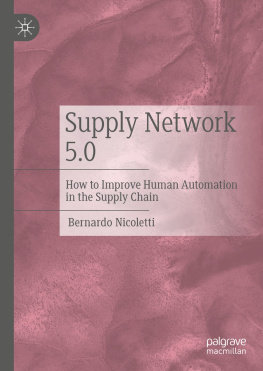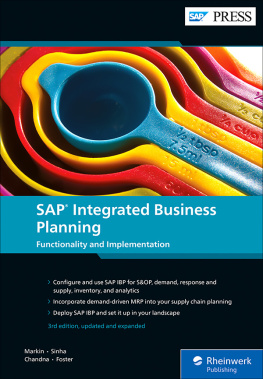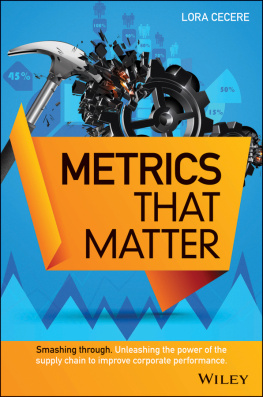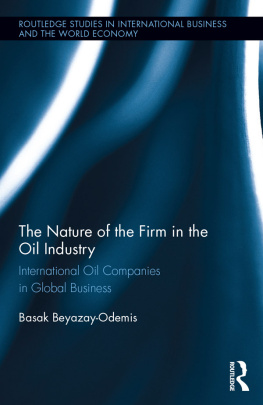Why did venerable car insurance giant Allstate start offering more features and customer choices that went against conventional risk practices?
How did Best Buy manage to thrive even as its biggest competitor, Circuit City, went out of business?
How did Ball Park Franks, which its parent company Sara Lee was considering deemphasizing in 2005, become one of the nations hottest consumer brands just two years later?
How did Bud Light Lime become one of the fastest-growing new beer introductions in the last thirty years?
What gave the CEO of Hersheys the confidence to share his competitive strategy with the entire food industry?
The answers to these questions reflect a fundamental shift in the relationship between supply and demand in the global economy. It is a shift from a supply-driven economy to a demand-driven economy. It is a shift that requires a new set of strategies and tools.
The centuries-old definition of demand is a simple one: quantity sought at a given price. But experience has taught us that demand is much more complex: Demand is what customers possess in terms of the needs and desiresemotional, psychological, and physicalthey want satisfied, and have the purchasing power to satisfy. For companies, demand is ultimately about profit. At the end of the day, whoever satisfies demand the best, profits most.
In the pages ahead, we will explain and illustrate the dynamics of demand more thoroughly, all in service of the three goals of this book: 1) to help you understand the forces behind the shift from a supply-driven to a demand-driven economy; 2) to help you develop the business strategies required by that shift; and 3) to provide you with the tools for executing that shift.
Using case studies drawn from our consulting work with clients and other demand-driven companies, we will show you how companies are winning in the demand economy and how you too can win, no matter what sector or part of the world your business operates in.
DISEQUILIBRIUM AND DISINTERMEDIATION
For more than a generation, business has been extraordinarily focused on the supply chain: building it, perfecting it, defending it. And the modern corporation depends on the supply chain to continually generate profits, because organic growth has been so hard to achieve.
The great companies of the past have always taken an historic innovationAT&T with the telephone, Ford with cars, IBM with computersand then consolidated control by defending their distribution arm at all costs. But the fastest-growing companies of today, such as Apple, Amazon, Facebook, Twitter, and Google, dont focus nearly as much on distribution channels. Instead, their businesses are built around consumption models, and their single-minded focus is on building relationships to their family of consumers to earn their trust, to expand their role in their consumers lives, and to enlist them in everything from product design to service.
These twenty-first-century enterprises are as focused on constantly improving their levels of trust with their customers and consumers as they are on the degrees of efficiency of supply.
And that is only half of the story. Even as this cultural shift is taking place, the nature of distribution itself is undergoing a transformation. Today, most manufacturing business models are still built around the traditional notion of a physical community of towns and roads, warehouses and delivery trucks, advertising and point-of-sale marketing. Not surprisingly then, most supply chains are also built around local physical stores and factories.
But what happens in a world where ones neighborhood is as much virtual as physical? When your friends and other key influencers are scattered around the world? What happens when a single opinion, via a blog or Web posting, can influence a billion consumers on four continents? For these questions, the traditional supply-centric business model has few answers.
Every great step forward in business history, from the Industrial Revolution to the brand management system to the virtual corporation, has taken place at the system level. That is, how do you coordinate assets, information, and people? Today, the Internet is the ultimate such system, bigger than any that came before. Can we be surprised then that it reverses that most traditional of business relationships, the one between manufacturer and customer? Or that the old supply model is now beginning to seek new solutions in a world in which the consumer, for the first time ever, is enthroned in the drivers seat of the global economy?
We were given an advance warning of this trend more than a decade ago, during the so-called dot-com bubble. Unfortunately, we drew all of the wrong conclusions from that period. Even today, that era, with its creation and destruction of thousands of new companies, is typically seen as an example of wasteful runaway business growth.
To the contrary, we should look back on the dot-com era as being one of extraordinary importance. The big idea in the air in the 1990s was disintermediation :1 the notion that business systems, empowered by the new information and communications technologies, would strip out the middleman and grow more efficient in the process. The dot-com era was essentially this idea of disintermediation, propelled by the Internet, reaching the retail worldreplacing traditional bricks-and-mortar businesses with e-commerce companies.
As we all know, the explosion of thousands of new online retailers that targeted almost every retail business from overstock inventory to groceries to pet food was followed instead by a massive shakeout in the industry that quickly killed the vast majority2 of those companies. The dot-com bubble was followed by the dot-com bust.
But on closer inspection, the story is much more interesting. The fact is that almost all of those e-commerce companies were retail-driven enterprises, often driven by old-line supply companies. And if you had looked at their business plans, you would have noticed that few of them had any idea exactly who would buy these products or services (Pets.com being the most notorious example). In fact, very few had any fulfillment capability or competitive advantage to speak of.
By comparison, those companies that did survive the shakeoutAmazon, eBay, Yahoo, Orbitz, Googlehave proven to be some of the most important and influential companies of recent years. And they in turn set the pattern for the Web 2.0 social media firms such at Twitter, MySpace, Facebook, and YouTube that have redefined modern life. What did those survivors have in common? Their business was based on what customers wanted, rather than what the suppliers already had. They were the harbingers of the demand-driven economy, if only we had noticed.













